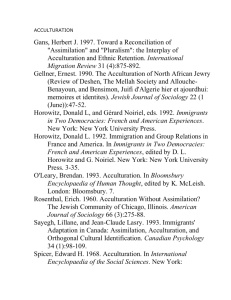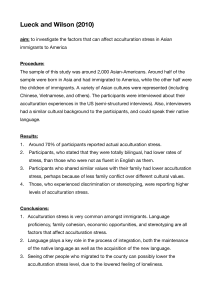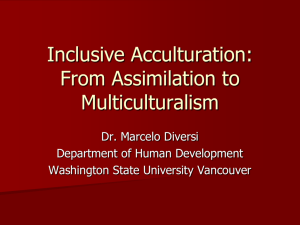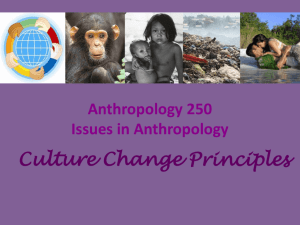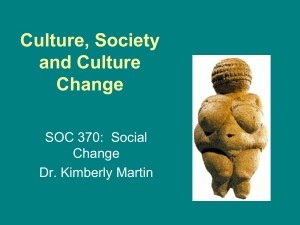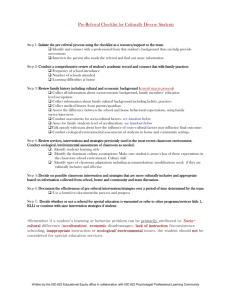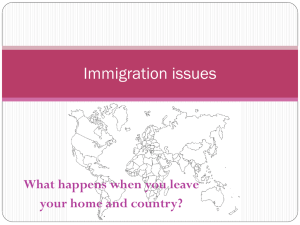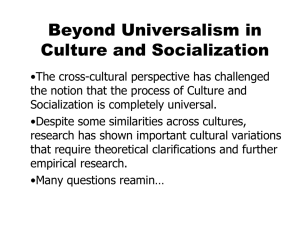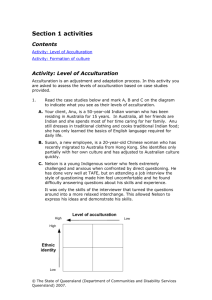Immigration & Cultural Change: Acculturation and Assimilation
advertisement
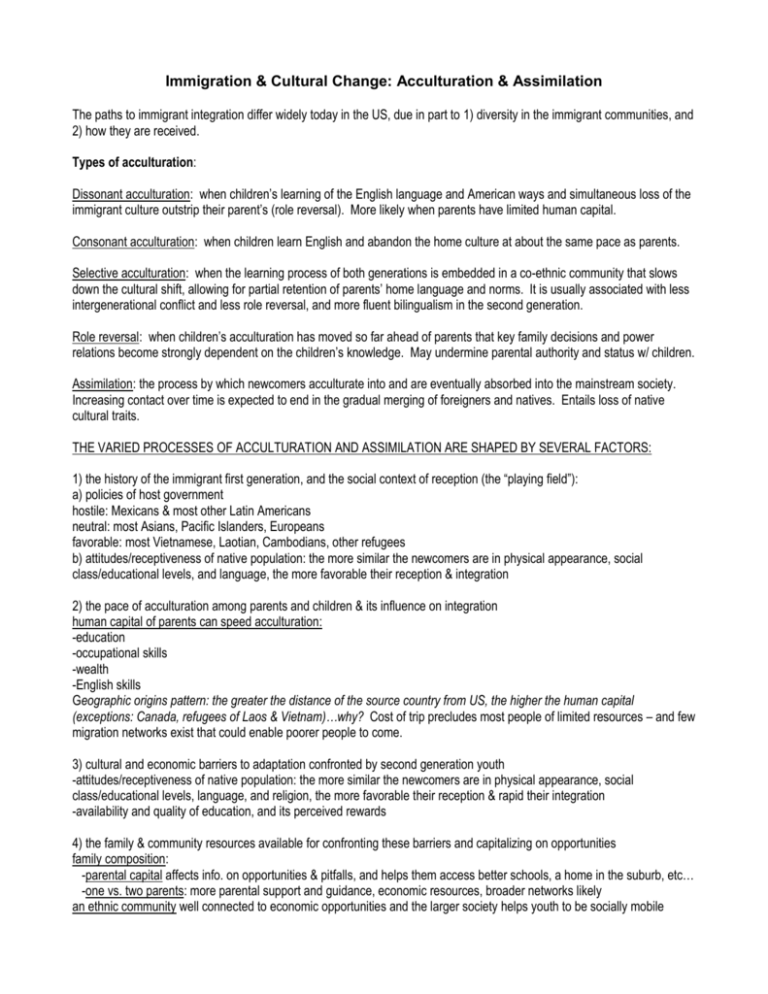
Immigration & Cultural Change: Acculturation & Assimilation The paths to immigrant integration differ widely today in the US, due in part to 1) diversity in the immigrant communities, and 2) how they are received. Types of acculturation: Dissonant acculturation: when children’s learning of the English language and American ways and simultaneous loss of the immigrant culture outstrip their parent’s (role reversal). More likely when parents have limited human capital. Consonant acculturation: when children learn English and abandon the home culture at about the same pace as parents. Selective acculturation: when the learning process of both generations is embedded in a co-ethnic community that slows down the cultural shift, allowing for partial retention of parents’ home language and norms. It is usually associated with less intergenerational conflict and less role reversal, and more fluent bilingualism in the second generation. Role reversal: when children’s acculturation has moved so far ahead of parents that key family decisions and power relations become strongly dependent on the children’s knowledge. May undermine parental authority and status w/ children. Assimilation: the process by which newcomers acculturate into and are eventually absorbed into the mainstream society. Increasing contact over time is expected to end in the gradual merging of foreigners and natives. Entails loss of native cultural traits. THE VARIED PROCESSES OF ACCULTURATION AND ASSIMILATION ARE SHAPED BY SEVERAL FACTORS: 1) the history of the immigrant first generation, and the social context of reception (the “playing field”): a) policies of host government hostile: Mexicans & most other Latin Americans neutral: most Asians, Pacific Islanders, Europeans favorable: most Vietnamese, Laotian, Cambodians, other refugees b) attitudes/receptiveness of native population: the more similar the newcomers are in physical appearance, social class/educational levels, and language, the more favorable their reception & integration 2) the pace of acculturation among parents and children & its influence on integration human capital of parents can speed acculturation: -education -occupational skills -wealth -English skills Geographic origins pattern: the greater the distance of the source country from US, the higher the human capital (exceptions: Canada, refugees of Laos & Vietnam)…why? Cost of trip precludes most people of limited resources – and few migration networks exist that could enable poorer people to come. 3) cultural and economic barriers to adaptation confronted by second generation youth -attitudes/receptiveness of native population: the more similar the newcomers are in physical appearance, social class/educational levels, language, and religion, the more favorable their reception & rapid their integration -availability and quality of education, and its perceived rewards 4) the family & community resources available for confronting these barriers and capitalizing on opportunities family composition: -parental capital affects info. on opportunities & pitfalls, and helps them access better schools, a home in the suburb, etc… -one vs. two parents: more parental support and guidance, economic resources, broader networks likely an ethnic community well connected to economic opportunities and the larger society helps youth to be socially mobile

